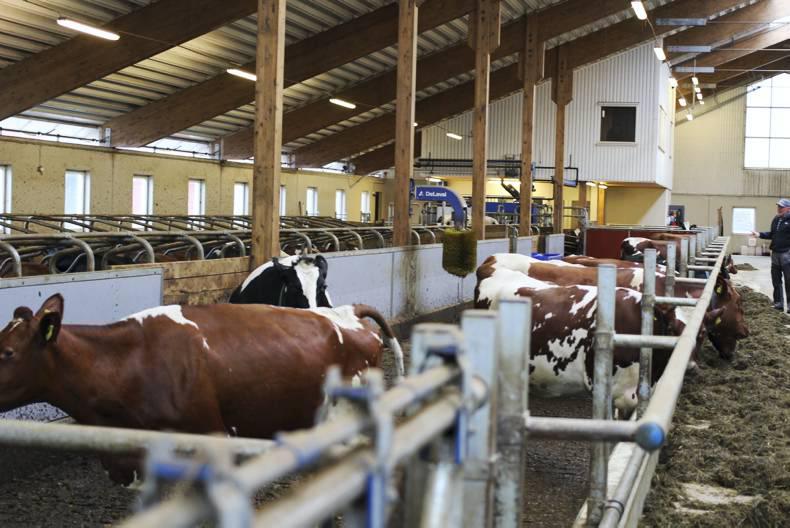A group of 50 Norwegian farmers have completed a four-day visit to Ireland during which they held discussions with the IFA and Teagasc, visited farms and met farmers involved in dairy, beef and potato production.
The visitors are members of Norges Bondelag, the Norwegian Farmers Union, and come from one of the 18 areas Norway is divided into for administrative purposes, similar to Irish counties. They were led by chair Thorleif Muller and joined by Christian Anton Smedshaug from Agri-Analyse, who acted as a special adviser to the group.
He is an agricultural economist and former Norwegian MEP who has written extensively on how the value of agricultural commodities cannot be protected without restraint on production.
A totally different proposition
Norwegian farmers find Irish farming a totally different proposition from their system. In Norway there is a serious deficit of production compared with consumption, requiring up to half of food consumed there to be imported. Production is quota-restricted, as is access to the Norwegian market for other countries. Consequently, they currently enjoy milk prices between the equivalent of 50c/l and 55c/l, while beef values are in excess of the equivalent of 700c/kg.
Ireland, of course, is a huge net exporting country and therefore much more exposed to global market values.
No access to CAP
Norway’s farmers don’t have access to the Common Agricultural Policy (CAP), although they are part of the European Economic Area and have free access to EU markets (excluding a range of agricultural products). The national government agrees farm support with the Norwegian Farmers Union annually and, with agriculture integrated with tourism and a wealthy oil-based economy, there is strong government support for farming.
Read more
Farming in Norway
More than the land of midnight sun
A group of 50 Norwegian farmers have completed a four-day visit to Ireland during which they held discussions with the IFA and Teagasc, visited farms and met farmers involved in dairy, beef and potato production.
The visitors are members of Norges Bondelag, the Norwegian Farmers Union, and come from one of the 18 areas Norway is divided into for administrative purposes, similar to Irish counties. They were led by chair Thorleif Muller and joined by Christian Anton Smedshaug from Agri-Analyse, who acted as a special adviser to the group.
He is an agricultural economist and former Norwegian MEP who has written extensively on how the value of agricultural commodities cannot be protected without restraint on production.
A totally different proposition
Norwegian farmers find Irish farming a totally different proposition from their system. In Norway there is a serious deficit of production compared with consumption, requiring up to half of food consumed there to be imported. Production is quota-restricted, as is access to the Norwegian market for other countries. Consequently, they currently enjoy milk prices between the equivalent of 50c/l and 55c/l, while beef values are in excess of the equivalent of 700c/kg.
Ireland, of course, is a huge net exporting country and therefore much more exposed to global market values.
No access to CAP
Norway’s farmers don’t have access to the Common Agricultural Policy (CAP), although they are part of the European Economic Area and have free access to EU markets (excluding a range of agricultural products). The national government agrees farm support with the Norwegian Farmers Union annually and, with agriculture integrated with tourism and a wealthy oil-based economy, there is strong government support for farming.
Read more
Farming in Norway
More than the land of midnight sun






 This is a subscriber-only article
This is a subscriber-only article





SHARING OPTIONS: